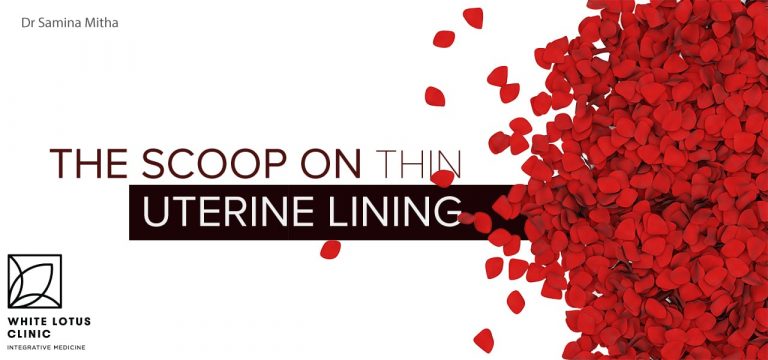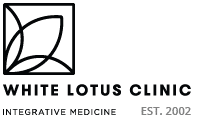When going through fertility treatments, endometrial lining will be checked throughout the cycle to ensure appropriate thickness. Sometimes, we see that certain drugs such as Clomid reduce endometrial thickness. Other times, the patient will have various other causes for thin lining. In some cases, an embryo transfer will be delayed due to low endometrial thickness. Fortunately, we can use various strategies to treat thin lining from a naturopathic perspective.

Considerations:
- Asherman’s syndrome, which is characterized by scar tissue or adhesions to the uterus due to trauma—this often requires a D&C to be performed
- Inability for the endometrium to respond to estrogen.
- Autoimmune conditions such as Hashimoto’s Thyroiditis
- Thrombophilia or clotting disorders, which can impact blood flow.
- Nutritional deficiencies such as vitamin D, iron, and/or B12
- Genetic Factors
- Drugs such as clomid
Naturopathic Treatments for Thin Lining:
Diet – Focus on foods that are considered blood tonics. This means they can help to increase iron status. These iron-rich foods include grass-fed beef, lamb, green leafy vegetables, dark berries, beets, dates, and nutritional yeast.
Vitamin E with Arginine – Studies show that 600mg of Vitamin E and 6 grams of Arginine increased uterine blood flow and endometrial thickening in patients with a lining less than 8mm. Lower levels of Vitamin E have been seen with abnormal endometrial growth especially in endometriosis. (4)
Vitamin D – Some may argue that Vitamin D is more a hormone than a vitamin. It has receptors located in the ovary, uterus, placenta, endometriomas, and fibroids. You will produce Vitamin D in the endometrium in response to an embryo. Vitamin D deficiency has been associated with recurrent miscarriage, and autoimmune infertility.
Omega 3 – Omega 3 fatty acids are important for so many reasons. In particular, when it comes to fertility support, it’s extra special for implantation. One study showed that omega 3 supplementation increased implantation markers. (3) Additionally, taking Omega 3 along with low-dose aspirin showed improvements in endometrial thickness. (2)
Selective Estrogen Reuptake Modulators – Aka “SERMs” are known to bind to estrogen receptors and modulate estrogen levels. For example, if estrogen to is too low, SERMs can help bring levels up. In contrast, if estrogen is too high, SERMs will help to bring estrogen down. Known botanical SERMs that can be helpful in supporting endometrial thickness include wild yam, cimicifuga, shatavari, and resveratrol.
Acupuncture – Using acupuncture can be helpful during a cycle to regulate factors related to implantation. A recent study showed that acupuncture with electrostimulation (meaning a small amount of stimulation is added to the needle using an electrostimulation device) can help with improving endometrial thickness in healthy women. Additionally, moxibustion, which is a herb that is used to heat the end of the needle, has also been shown to help improve endometrial thickness. (4)
Key Points:
- There can be many causes for low endometrial thickness.
- Diet, supplementation and acupuncture can be great ways to support endometrial thickness.
Next Steps:
- If you need support, please book an initial visit with one of our Naturopathic Doctors. We work with patients who are at the fertility clinic all the time and can help with building a treatment plan that is in collaboration with your fertility protocols.
References:
1. Impact of transcutaneous electrical nerve stimulation (TENS) on endometrial thickness in the healthy women, a step to improve the female fertility. (n.d.). Retrieved November 30, 2020, from https://www.researchgate.net/publication/333210364_Impact_of_transcutaneous_electrical_nerve_stimulation_TENS_on_endometrial_thickness_in_the_healthy_women_a_step_to_improve_the_female_fertility
2. Lazzarin, N., Vaquero, E., Exacoustos, C., Bertonotti, E., Romanini, M. E., & Arduini, D. (n.d.). Low-dose aspirin and omega-3 fatty acids improve uterine artery blood flow velocity in women with recurrent miscarriage due to impaired uterine perfusion. https://doi.org/10.1016/j.fertnstert.2008.05.045
3. Sarsmaz, K., Goker, A., Micili, S. C., Ergur, B. U., & Kuscu, N. K. (2016). Immunohistochemical and ultrastructural analysis of the effect of omega-3 on embryonic implantation in an experimental mouse model. Taiwanese Journal of Obstetrics and Gynecology, 55(3), 351–356. https://doi.org/10.1016/j.tjog.2016.04.011
4. Takasaki, A., Tamura, H., Miwa, I., Taketani, T., Shimamura, K., & Sugino, N. (2010). Endometrial growth and uterine blood flow: a pilot study for improving endometrial thickness in the patients with a thin endometrium. Fertility and Sterility, 93(6), 1851–1858. https://doi.org/10.1016/j.fertnstert.2008.12.062




